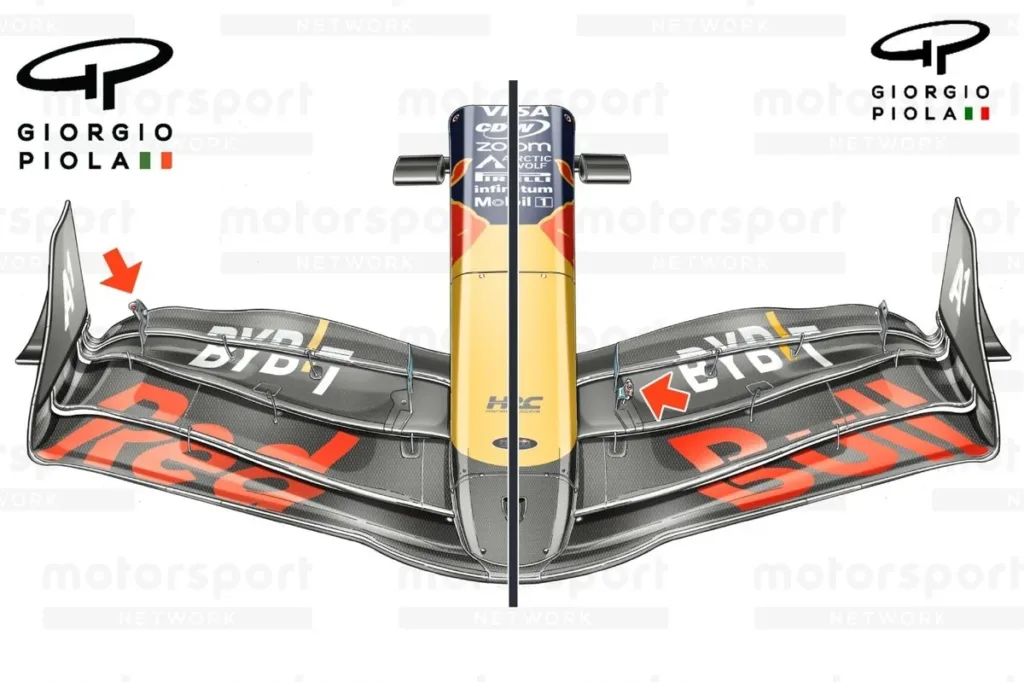Formula 1 News: Red Bull’s Struggles Linked to Front Wing Design
In a surprising turn of events, Red Bull’s dominance in the Formula 1 season has been overturned, with McLaren and Mercedes making significant strides and leaving Max Verstappen without a victory since the Spanish Grand Prix. According to team boss Christian Horner, the key to their rivals’ success lies in the front wing design.
“I think the front wing is a key area where others have found some performance,” Horner explained. “The way that the front wings are being used are quite different. If you look at the front wing angle of McLaren and Mercedes, they’re very, very different. Very different to the rest of the group.”
A closer inspection of the front wing designs reveals notable differences between Red Bull and its competitors. Mercedes introduced a lower rear corner endplate cutout and semi-detached flap arrangement in 2022, which has since been adopted by McLaren. This design tweak manipulates airflow and influences the wake created by the tyre behind.
Moreover, McLaren and Mercedes treat the division between the static inboard section of the wing and the movable flaps differently. On the MCL38 and W15, there is a more diagonal bias in the split between the two sections, resulting in a vortex being shed from the two metal separators on the end of each section. This vortex is tuned to improve flow downstream to the floor and sidepod undercut.
Additionally, the moveable flap section backs off as speed builds, helping to combat low-speed understeer and high-speed oversteer. This flexible wing design undoubtedly alters the shape, direction, and strength of the vortex, which can be tuned to further improve performance if a team has enough control over how those elements flex.
Haas principal aerodynamicist Simone Benelli confirmed that teams have been using aero elasticity to improve performance for years, with multiple ways of achieving differing results. “We’ve always played around with the flexibility of the top of the flap… it’s probably the most interesting aspect of the front wing development, so sort of playing together, not just following the wind tunnel numbers, but also putting the structure in the context. It’s not just about flexing. It’s how you flex, so it’s about stiffness as well.”
The upturn in performance for McLaren and Mercedes can be attributed to their latest front wing designs, introduced in Miami and Monaco respectively. Meanwhile, Red Bull has been experimenting with both old and new design solutions, trying to find the right combination to unlock their car’s underlying performance.
While Red Bull is still unclear on where they might have lost a step in their development chain, they appear happy with the tests conducted at the Dutch Grand Prix. According to Horner, “We have plenty of work to do but we have learnt a lot of lessons this weekend [at the Dutch GP] that can be very valuable. We have tried some things on the car that we have good data from to assess. We need to make sure we use that; it is time to digest what happened here and try to bounce back in Monza.”
As the Formula 1 season enters its next stage, it’s clear that Red Bull’s struggles are far from over. With the next race in Monza, Italy, scheduled for September 4th, fans will be eagerly watching to see if Red Bull can bounce back and reclaim their dominant position.
🔗 Source
